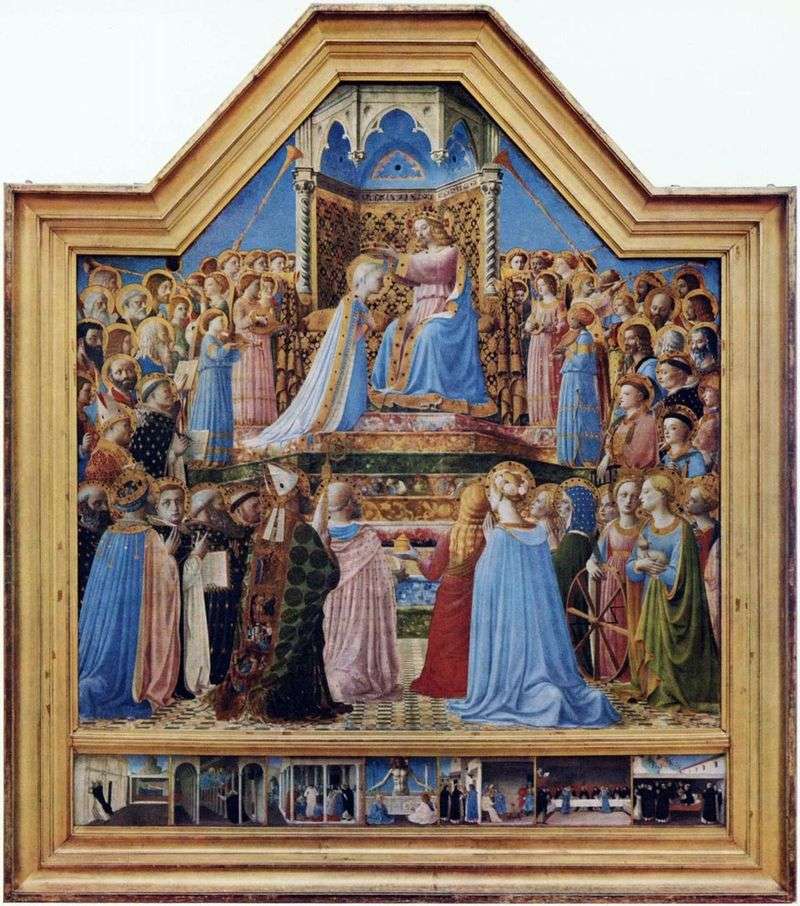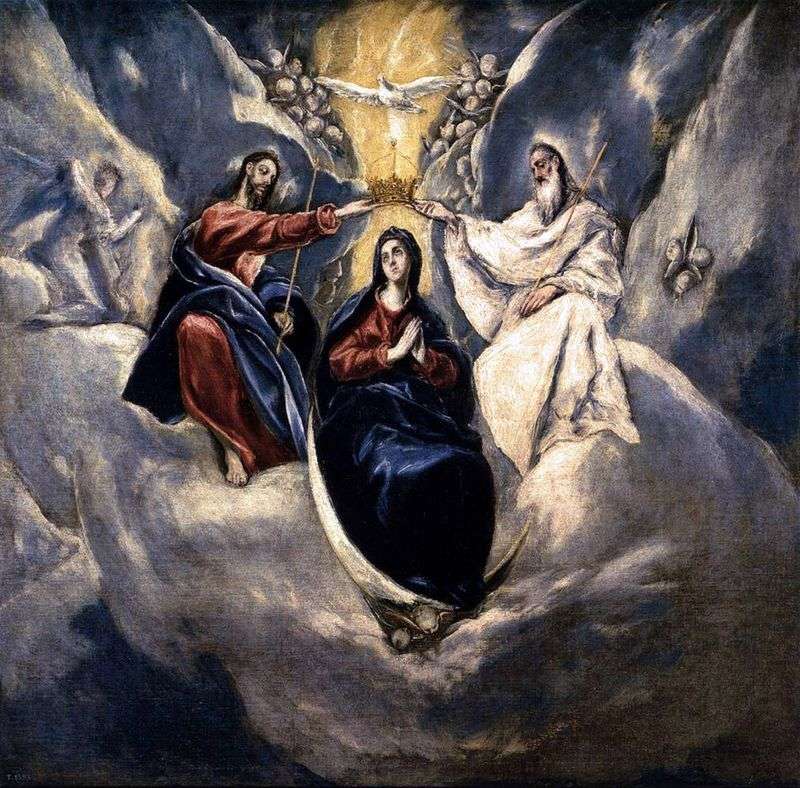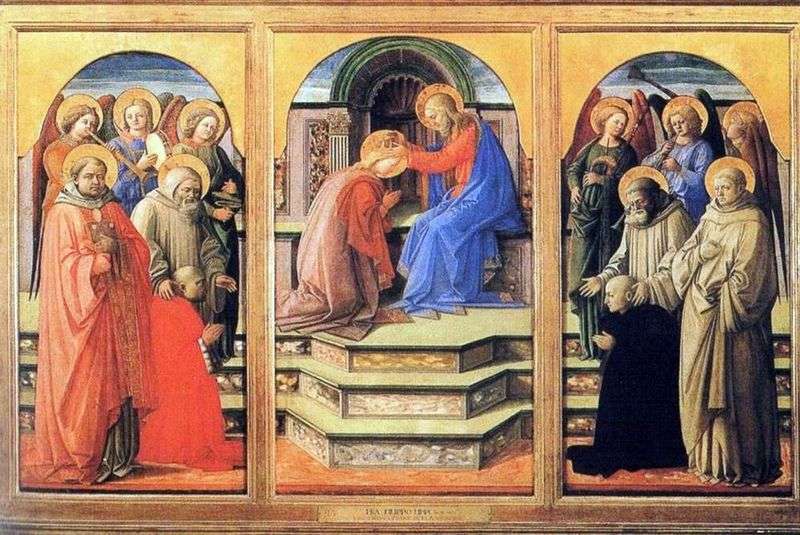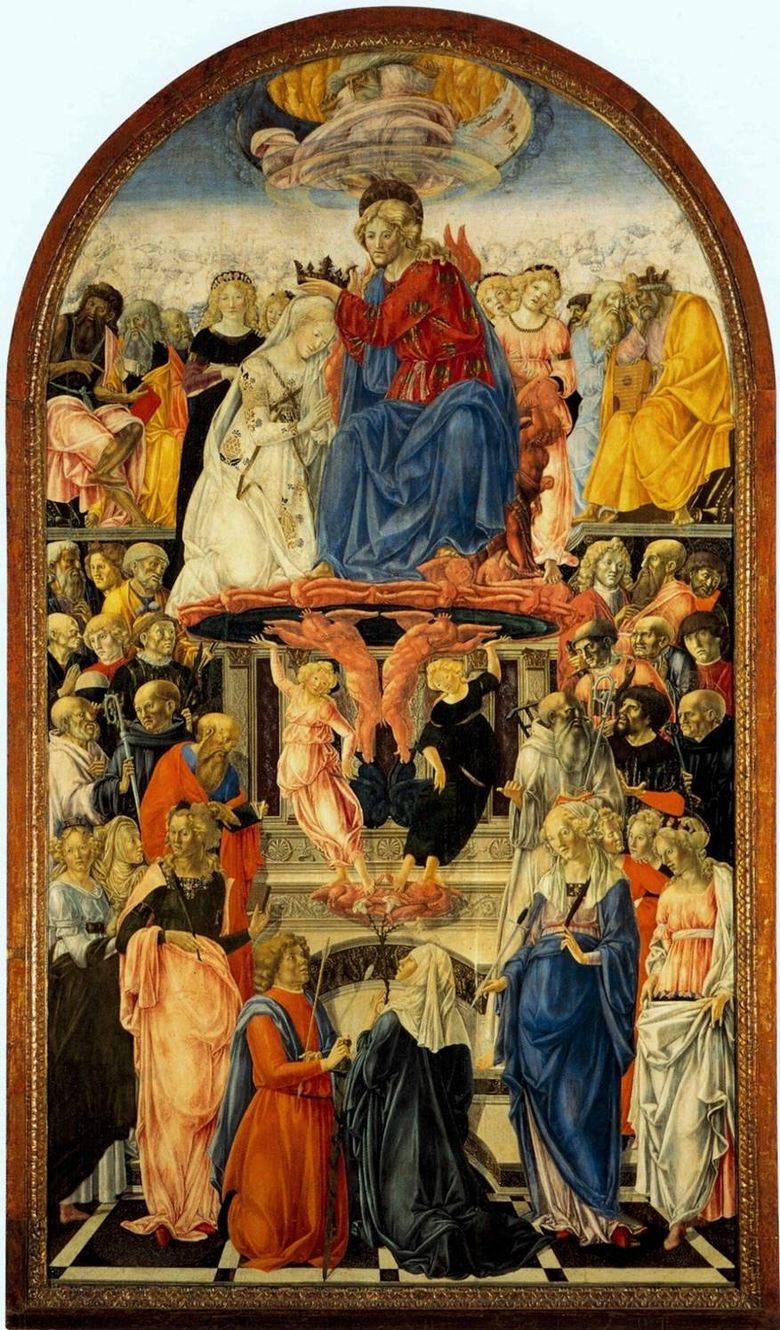
The coronation of the Virgin Mary is a popular theme in the art of the early Renaissance. The final legend from the Life of the Virgin Mary says: Mary, who ascended to heaven, was enthroned by God the Father and her Son and crowned as the Heavenly Queen. This plot forms the final and climactic scene in the narrative cycle of the life of the Virgin Mary, when he follows the death of the Virgin Mary and her acceptance into heaven.
The plot is found in paintings created specifically for altars of churches dedicated to the Virgin Mary or belonging to the monastic orders, enjoying her patronage. Its most common form is the Virgin Mary, sitting next to Christ, who wears a crown on her head. Another option: the Virgin Mary is kneeling before Christ. Or she receives a crown from God the Father or from the Trinity.
Designed for the abbey in Monteoliveto Maggiore, this large and multi-figured altar is the most ambitious and complex creation of Francesco di Giorgio. The central scene with Christ, who crowns Mary on the podium, supported by the angels, is surrounded by about forty characters, endowed with sharp graphic interpretation, with individual features. Above all, in a complex perspective, a whirlwind image of God the Father appears.
 Coronation of the Virgin Mary by Fra Beato Angelico
Coronation of the Virgin Mary by Fra Beato Angelico The Coronation of Our Lady by Diego Velasquez
The Coronation of Our Lady by Diego Velasquez The Coronation of Mary by Sandro Botticelli
The Coronation of Mary by Sandro Botticelli Coronation of the Virgin Mary by El Greco
Coronation of the Virgin Mary by El Greco The Crowning of Mary by Fra Filippo Lippi
The Crowning of Mary by Fra Filippo Lippi Le couronnement de Marie – Francesco di Giorgio Martini
Le couronnement de Marie – Francesco di Giorgio Martini La Coronación de María – Francesco di Giorgio Martini
La Coronación de María – Francesco di Giorgio Martini The altar of San Marco, or the Coronation of Mary with the angels, the Evangelist John and St. Augustine, Jerome and Eligius by Sandro Botticelli
The altar of San Marco, or the Coronation of Mary with the angels, the Evangelist John and St. Augustine, Jerome and Eligius by Sandro Botticelli